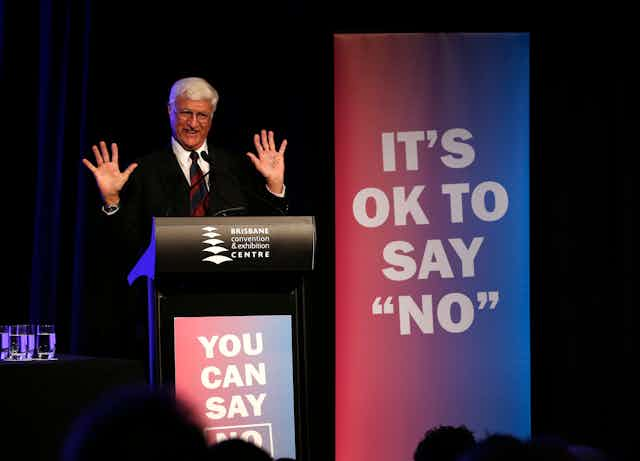Australians have overwhelmingly voted “yes” for same-sex marriage. This means politicians will have to give up relying on the myth that a cultural backlash against the progressive agenda is driving voters to minor parties.
Read more: Same-sex marriage result delivers much-needed good news for embattled Turnbull
The minor party vote is on the rise in Australia. In the 2016 federal election, first-preference Senate votes for minor parties (including the Greens) reached over 35% – the highest level since 1949.
Conservative politicians and commentators in Australia push the “outsider politics” theory, arguing that the Liberal Party should embrace conservative social values to bring disenchanted voters back into the tent.
These same voters are supposed to have been pivotal players in the shock election of Donald Trump in the US, the Brexit vote in the UK, and the upsurge of populist right-wing parties in Europe.
Some research argues these voters are those who are fearful of losing their established status by the expansion of rights to minority groups. They tend to be white, older, and less educated.
But the same-sex marriage ballot suggests that appealing to these voters would not be an election-winning strategy here. The clear majority of Australians – including Australians from a broad spread of electorates – have rejected the conservative position on marriage.
How Australia voted
More than 61% of voters who participated in the survey were in favour of changing the Marriage Act so same-sex couples can marry. The strongest support came from electorates in the inner-cities of Victoria and Sydney. The outer suburbs of Sydney, and regional Queensland were the least in favour.
In general, the electorates with the highest levels of support for marriage equality are those with a high percentage of tertiary educated people, and more people working in services rather than agriculture and manufacturing. But there was no discernible difference in the vote by average age of the electorate, and support was not higher in areas with a large Australian-born population.
While most inner-city electorates said yes to same sex marriage, plenty of the regional electorates did too. It is notable that once you get more than 40kms from the CBD, the average “yes” vote doesn’t vary much by location. In other words, Australia’s regions are no more or less conservative than the outer suburbs of our cities on the question of marriage equality.
But there are important differences between states. Queensland electorates – whether in the city or the regions – were much less likely to support same-sex marriage, as were electorates in western Sydney. Victorian electorates had the highest level of support.
The difference in voting between regional areas in Queensland compared to regional areas in Victoria is particularly striking. Most electorates in regional Victoria delivered a yes vote in excess of 60%.
In contrast, many regional electorates in Queensland were below 50%. These differences can’t be explained by education levels or age profiles, which are not notably different between these parts of the country.
The explanation for this state-based “cultural divide” remains an open question.
If not “outsider politics” then what?
The result of the same-sex marriage survey is not surprising to people familiar with the survey data on Australian attitudes: support for marriage equality and for LGBT rights more generally has been increasing over the past decade.
Other surveys reveal rising support for a whole range of socially progressive issues, including access to abortion, decriminalisation of marijuana, and support for women in business.
It’s very unlikely that a “yes” vote for marriage equality would have passed in Australia ten years ago. Those arguing for a closer embrace of more socially conservative positions are moving in the opposite direction to the electorate.
Politicians seeking to explain rising voter dissatisfaction will need to look elsewhere. An upcoming Grattan Institute report will show that falling trust in government is the most important explanation for the rising minor party vote.
This means the government’s response to the same-sex marriage ballot will be vital. An overwhelming 79.5 % Australian voters participated in the ballot – higher than for the Brexit vote in England (72%) and well above the 2016 US election (58%). They did so because they hoped their time and effort would count.
They expect their political representatives to now follow through. If the government descends into ugly political infighting, or if the parliament fails to deliver the legislation as promised before Christmas, that would only compound the corrosive view that our politicians are out-of-touch and can’t be trusted.
If the government wants to win back voter trust, then a good place to start would be to keep faith with the admirably clear wording of the survey and change the law to allow same-sex couples to marry.

